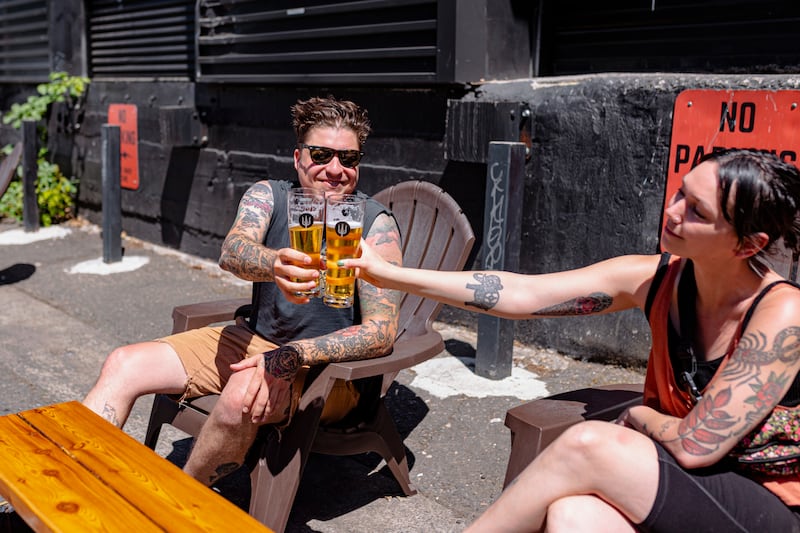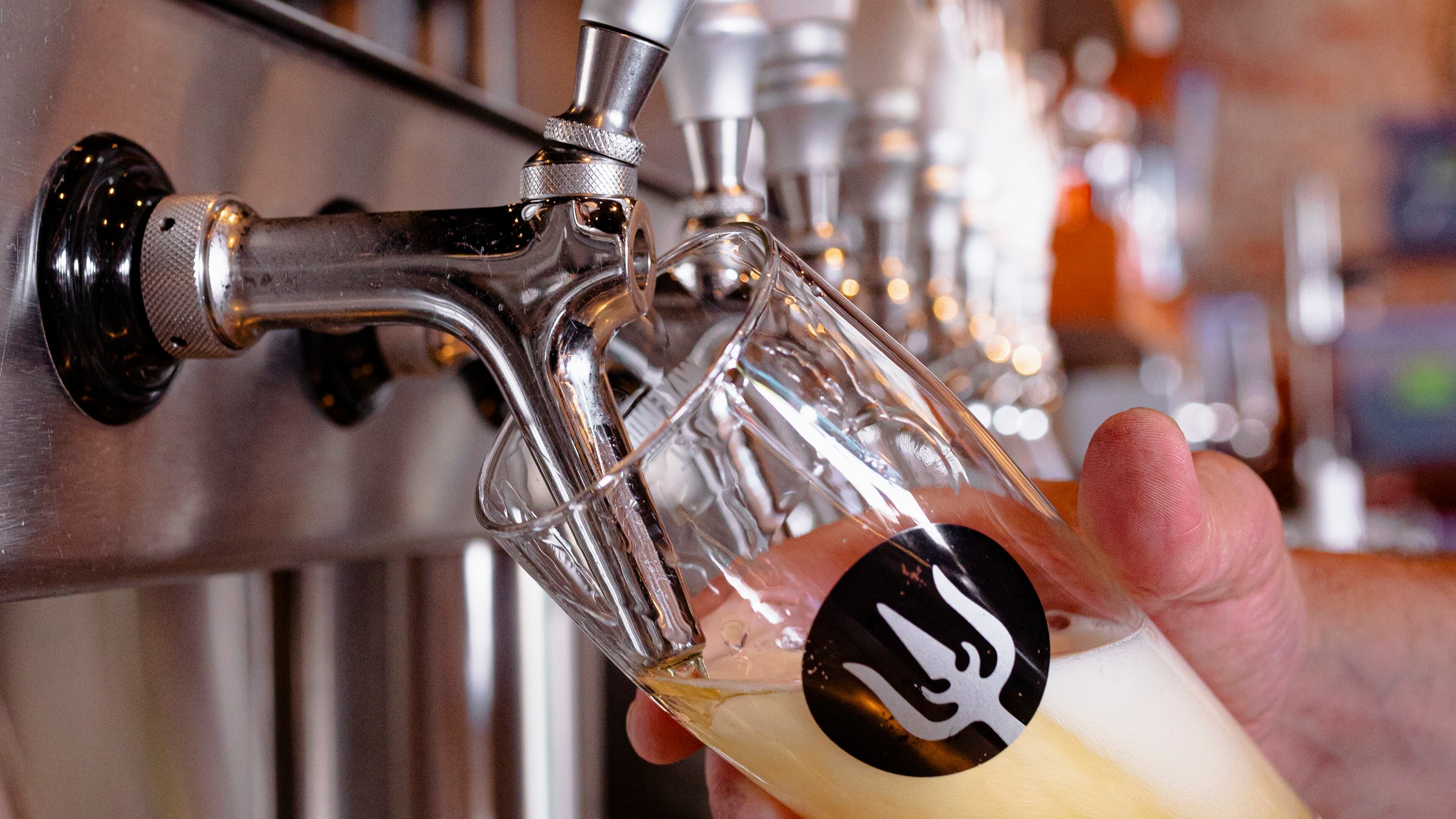When Wayfinder Beer opened in Portland’s industrial eastside five years ago, brewmaster Kevin Davey knew for certain that he wanted to make two beers: a stellar hazy IPA and a classic, West Coast take on the style, like the kind he used to produce at Firestone Walker in California in the early 2010s.
But once Davey nailed down those recipes and the IPAs were on near-continual flow inside the warm, wood-and-brick barroom, he couldn’t help but feel a little limited by his next options.
“I’m like, that’s only two IPAs!” Davey laughs. “What else are we going to do? How do we differentiate?”
If that sounds like a slightly absurd question from someone who has distinguished himself with a lineup of premium craft lagers using Old World brewing techniques, keep in mind that Davey always intended for Wayfinder to evenly split its focus between IPAs and cold-fermented beverages, such as helles and Pilsner. So in his quest to expand the ale side, Davey invented an entirely new subcategory of beer: the Cold IPA.
“Ours is definitely the first. Is it a new style? I think that’s to be announced,” says Davey. “My diplomatic answer would be what we’re calling our Cold IPA is distinctively different than anybody else’s IPA. I think that it becomes its own style when everybody else can replicate the attributes, and when you go to a bar and you see a Cold IPA, you know what you’re going to get. We’re still in the infancy of that.”
Right now, consumers may be confused by the term, but the race to duplicate is well underway. Ever since Davey first tapped a batch in 2018—initially named Relapse but now rebranded as the Original Cold IPA—brewers from across the nation and in countries as far as Japan and Poland have been reaching out to learn how to make it on their systems.
Davey’s method will look different than most because the Cold IPA was partly inspired by his cold fermentation program. The initial goal was to employ adjunct grains, like corn and rice, similar to the way he incorporated them into a lager using a decoction vessel. The multistep process involves removing a portion of the mash, heating it separately, and then returning it to the primary batch of boiled cereals. By accessing parts of the grain a brewer couldn’t reach without decocting, the result is finished beer with a richer flavor and more robust body.
“It’s an old way of making beer before thermometers existed,” Davey explains. “Back in the day, you knew you needed to get the beer through these enzymatic steps, but you really didn’t know why. It was through trial and error, usually cooking. It’s inefficient to cook the whole darn thing, so if you can take a section out and put it back in, you can change the temperature.”
After that, Davey puts his house lager yeast to work. The fermentation temperature is much warmer than that for a lager, though, which means the normally lumbering strain provides a much quicker turnaround and doesn’t produce as much sulfur.
The Cold IPA is then finished with another German approach called dry-hop kräusening, where a brewer adds a high-fermenting beer to a completed batch that’s still young along with the aromatic cones. Davey says this will carbonate and clean up some off flavors.
Despite the complex processes, in your glass, the Cold IPA is deceptively simple and refreshing. If you’ve become accustomed to the flavors of fruit smoothies and marshmallows that dominate some tap lists, the beer’s crisp bitterness is a sharp, wonderful jolt.
“What Cold IPA is to me is this showcase,” Davey says. “It’s a blank canvas. It’s incredibly dry. So, really, it’s just like, ‘Hey, do you like these hops? Here they are.’”
Naturally, debates continue to rage in online forums about whether the Cold IPA is actually an “India pale lager,” which Davey will vehemently deny, noting that the style is not dry-hop kräusened, fermented warm or made up of 30% adjunct grains. But then he’ll simply point out that the IPA has always been a beverage undergoing constant evolution, so there’s room for the cold version to exist, too.
“IPA has changed so much since the style was really coined when they were talking about beers based on what they sent with the East India Trading Company,” says Davey. “Nobody’s drinking anything that resembles what it used to be. It’s gone through so many iterations. What can’t be an IPA? If I call it an IPA, you know what you’re going to get.”
Get It Here: Wayfinder Beer, 304 SE 2nd Ave., 503-718-2337, wayfinder.beer. Noon-10 pm Wednesday-Saturday, noon-8 pm Sunday.


